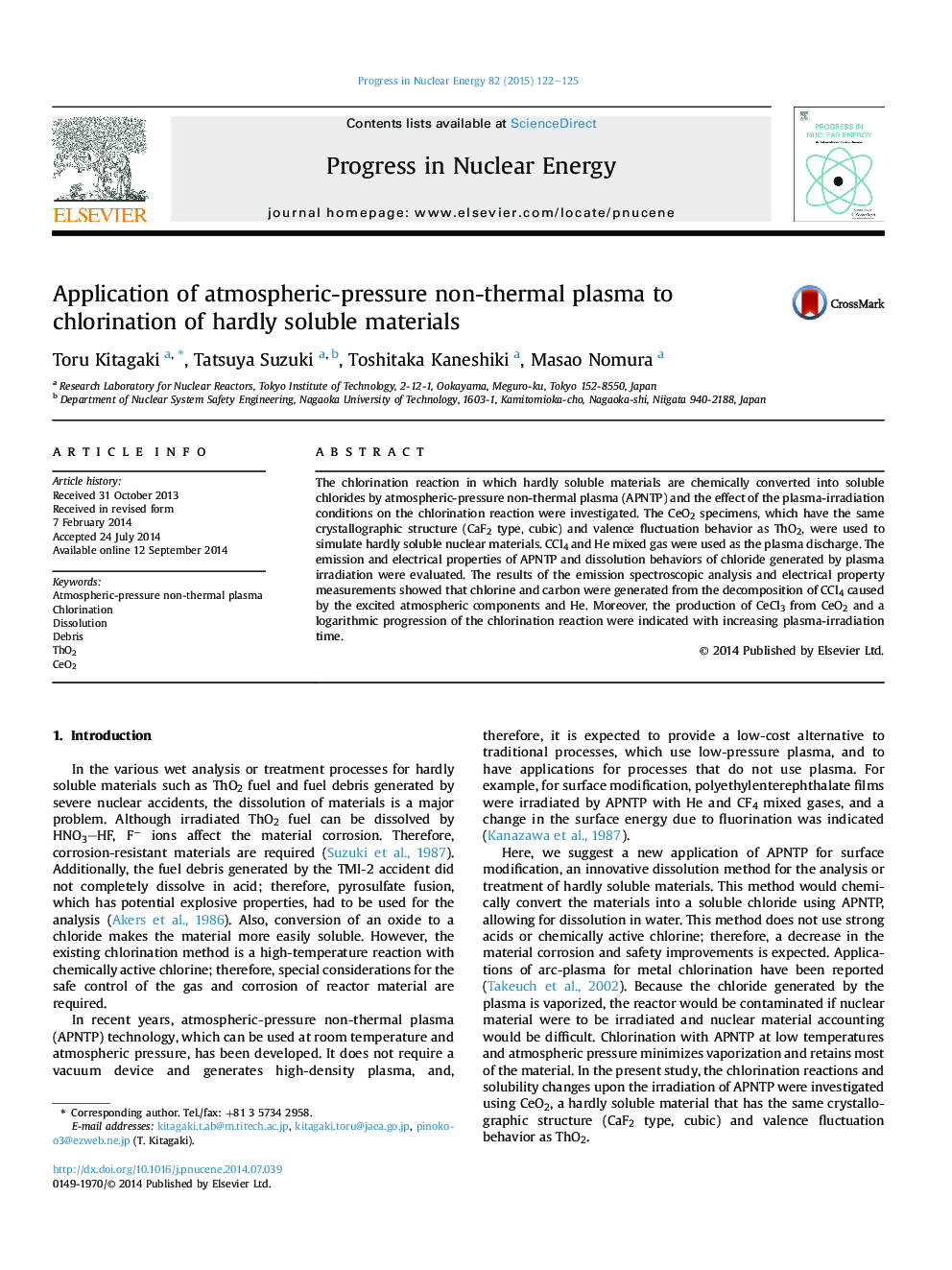| Article ID | Journal | Published Year | Pages | File Type |
|---|---|---|---|---|
| 1740354 | Progress in Nuclear Energy | 2015 | 4 Pages |
•The chlorination reaction by non-thermal atmospheric pressure plasma is investigated.•CeO2 as hardly-soluble materials and He/CCl4 mixed gas for plasma discharge are used.•Emission spectroscopic analysis shows decomposition of CCl4.•Production of CeCl3 from CeO2 is indicated.•The chlorination reaction progresses logarithmically with the plasma irradiation time.
The chlorination reaction in which hardly soluble materials are chemically converted into soluble chlorides by atmospheric-pressure non-thermal plasma (APNTP) and the effect of the plasma-irradiation conditions on the chlorination reaction were investigated. The CeO2 specimens, which have the same crystallographic structure (CaF2 type, cubic) and valence fluctuation behavior as ThO2, were used to simulate hardly soluble nuclear materials. CCl4 and He mixed gas were used as the plasma discharge. The emission and electrical properties of APNTP and dissolution behaviors of chloride generated by plasma irradiation were evaluated. The results of the emission spectroscopic analysis and electrical property measurements showed that chlorine and carbon were generated from the decomposition of CCl4 caused by the excited atmospheric components and He. Moreover, the production of CeCl3 from CeO2 and a logarithmic progression of the chlorination reaction were indicated with increasing plasma-irradiation time.
